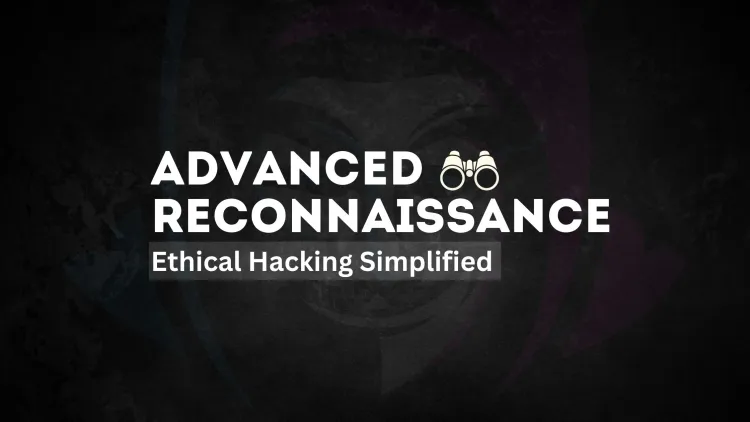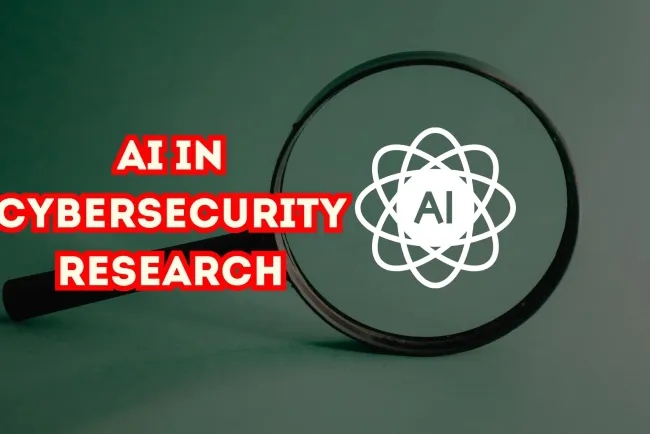Advanced Reconnaissance with Recon-ng | Ethical Hacking Simplified
Recon-ng is a versatile and powerful open-source reconnaissance tool that automates the collection of open-source intelligence (OSINT) from multiple sources. With its modular architecture and integration with third-party APIs, it allows ethical hackers to conduct advanced reconnaissance, uncover vulnerabilities, and gather crucial data about their target. Recon-ng is ideal for penetration testers, providing detailed reports, automating tedious tasks, and enabling better-informed decision-making during the early stages of penetration tests.

In the world of ethical hacking, reconnaissance is one of the most critical phases of a penetration test. This phase involves gathering as much information as possible about the target system or network before attempting to exploit vulnerabilities. Recon-ng is one of the most powerful and popular open-source tools used for advanced reconnaissance in ethical hacking. It simplifies the process of gathering intelligence and provides a framework for data collection and analysis. In this comprehensive guide, we'll explore what Recon-ng is, how it works, its key features, and why ethical hackers should consider using it in their security assessments.
What is Recon-ng?
Recon-ng is a web reconnaissance framework designed to gather open-source intelligence (OSINT) from the internet. It is a powerful tool that allows ethical hackers to automate information gathering, making it much easier to extract relevant data from publicly available sources. Recon-ng operates using a modular architecture, meaning that users can customize the tool by adding or removing modules based on their specific reconnaissance needs.
The tool is written in Python and has an intuitive command-line interface (CLI), which makes it accessible to both beginner and advanced penetration testers. It integrates with various online services, APIs, and data sources to enhance the depth and accuracy of reconnaissance.
Key Features of Recon-ng
Recon-ng comes with a range of powerful features that make it ideal for ethical hacking and penetration testing. Some of the key features of Recon-ng include:
| Feature | Description |
|---|---|
| Modular Architecture | Recon-ng’s modular design allows users to install or remove modules based on the specific task. |
| OSINT Data Collection | Recon-ng automates the collection of OSINT from over 50 data sources, including search engines, social media platforms, and WHOIS databases. |
| API Integrations | The framework integrates with a variety of third-party APIs like Shodan, Google, and DNSstuff for comprehensive data collection. |
| Automated Scanning | Recon-ng automates many reconnaissance tasks, saving time and increasing the efficiency of data collection. |
| Powerful Reporting | Recon-ng allows users to generate detailed reports based on the collected intelligence, which can be used for further analysis or presentation. |
| Customizable Modules | Ethical hackers can create their own custom modules or tweak existing ones to meet specific requirements. |
| Interactive Web Interface | The tool includes an interactive web interface to view the collected data and organize it in a manageable format. |
How Does Recon-ng Work?
Recon-ng works by using a variety of modules to gather different types of OSINT. Here's how it typically works during a penetration test:
-
Setup and Configuration: Once installed, Recon-ng allows you to configure the necessary settings such as API keys and other configurations for third-party data sources.
-
Module Selection: Recon-ng offers different modules for various reconnaissance tasks, such as domain information gathering, email address collection, subdomain enumeration, and more. Users can select the appropriate modules based on their specific goals.
-
Data Collection: Once a module is selected, Recon-ng automatically gathers data from different sources. For example, if the domain module is chosen, it might query WHOIS databases, search engines, and DNS servers to retrieve information about the target domain.
-
Data Analysis: Recon-ng organizes and stores the collected data in an accessible database format. Ethical hackers can review and analyze the information, such as identifying domain owners, related IP addresses, social media profiles, and other relevant details.
-
Reporting: Recon-ng provides options for generating detailed reports, summarizing the findings, and presenting them in an organized format. These reports are often used to create a detailed vulnerability assessment or as a deliverable for clients.
Why Ethical Hackers Use Recon-ng
1. Comprehensive OSINT Collection: Recon-ng gathers data from multiple sources, including public databases, social media platforms, and search engines, making it a one-stop solution for information gathering. Ethical hackers can obtain valuable insights about the target without having to manually search through multiple sites.
2. Automation: Recon-ng automates many reconnaissance tasks, saving ethical hackers significant time and effort. By automating the data collection process, users can focus on analyzing the results rather than collecting them manually.
3. Modular and Customizable: Recon-ng is highly modular, allowing users to install, remove, and customize modules based on their needs. This flexibility makes it suitable for various types of penetration tests and red team engagements.
4. Powerful API Integrations: The tool supports integrations with a wide range of third-party APIs, allowing it to pull data from popular OSINT platforms such as Shodan, Google, DNSstuff, and many more. This integration expands the scope of the tool and enhances the accuracy of reconnaissance.
5. Detailed Reporting: Recon-ng simplifies the process of report generation, making it easy for ethical hackers to present their findings in a clear and professional format. The generated reports can help identify attack vectors and provide recommendations for improving security.
Best Practices for Using Recon-ng
While Recon-ng is an incredibly powerful tool, it is essential to follow best practices to maximize its effectiveness:
-
Always Obtain Permission: Ethical hackers should always ensure they have proper authorization before conducting any reconnaissance activities. Unauthorized scanning and information gathering are illegal.
-
Use Recon-ng in the Early Stages: Recon-ng is best utilized in the initial phases of a penetration test to gather as much information as possible. The data collected can then be used to identify vulnerabilities and plan further attacks.
-
Customize Modules Based on the Target: Every target is different, and Recon-ng offers a wide variety of modules. Customize the modules based on the specifics of your target (such as domain, email addresses, IP addresses, etc.) to gather the most relevant information.
-
Integrate with Other Tools: Recon-ng can be integrated with other ethical hacking tools for a more comprehensive assessment. For example, combining Recon-ng with Nmap or Burp Suite can provide further insights into the target's vulnerabilities.
-
Keep API Keys Secure: If you're using third-party APIs, ensure that your API keys are kept secure. Always follow best practices for managing API keys and sensitive information.
Conclusion
Recon-ng is an essential tool for ethical hackers looking to conduct advanced reconnaissance. Its comprehensive capabilities, modular design, and automation make it a powerful addition to any penetration tester’s toolkit. By streamlining the process of collecting open-source intelligence and integrating with various APIs, Recon-ng enables ethical hackers to gather crucial information about their target network or system. Whether you're conducting vulnerability assessments, red teaming, or preparing for a penetration test, Recon-ng simplifies reconnaissance and ensures you gather relevant, actionable data in a time-efficient manner.
FAQs
1. What is Recon-ng?
Recon-ng is an open-source framework used for advanced reconnaissance and OSINT collection in ethical hacking and penetration testing.
2. How does Recon-ng collect OSINT?
Recon-ng collects OSINT by using a variety of modules that query public databases, search engines, and other online resources.
3. Can Recon-ng be used for all types of penetration tests?
Yes, Recon-ng is highly versatile and can be used for various penetration testing tasks, including network security and web application security assessments.
4. Do I need programming skills to use Recon-ng?
programming skills are not necessary to use Recon-ng, familiarity with command-line interfaces and basic ethical hacking concepts will enhance the experience.
5. Can Recon-ng generate reports?
Yes, Recon-ng can generate detailed reports based on the collected intelligence, making it easier for ethical hackers to present their findings.
6. Is Recon-ng compatible with other ethical hacking tools?
Yes, Recon-ng can be integrated with other tools like Nmap, Burp Suite, and Metasploit for a more comprehensive assessment.
7. How can I install Recon-ng?
Recon-ng can be easily installed on Linux, macOS, and Windows. It is typically installed using Python and pip.
8. Can I create custom modules for Recon-ng?
Yes, Recon-ng allows users to create and customize their own modules for specific reconnaissance needs.
9. Is Recon-ng free to use?
Yes, Recon-ng is an open-source tool and is available for free.
10. What should I do if Recon-ng reports sensitive data?
Always handle sensitive data carefully, ensuring that any information gathered is used ethically and in accordance with the scope of your authorization.












![Top 10 Ethical Hackers in the World [2025]](https://www.webasha.com/blog/uploads/images/202408/image_100x75_66c2f983c207b.webp)

![[2025] Top 100+ VAPT Interview Questions and Answers](https://www.webasha.com/blog/uploads/images/image_100x75_6512b1e4b64f7.jpg)









